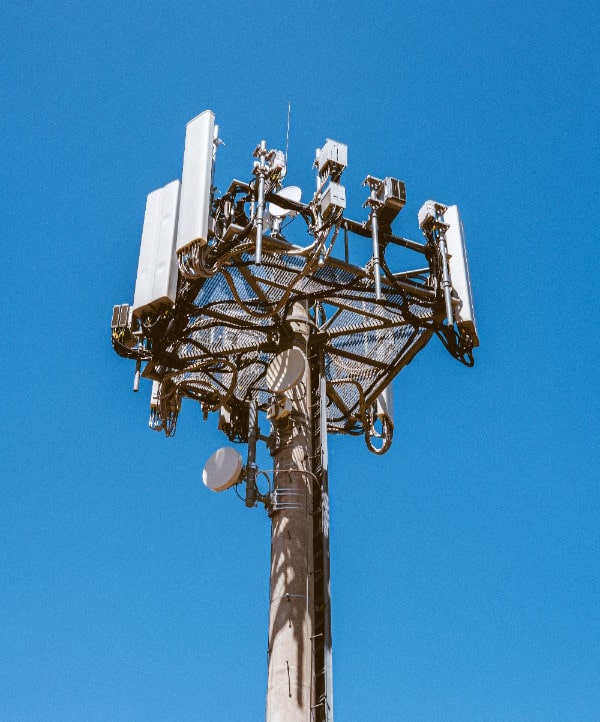Author: Sumeysh Srivastava
Published: 10th January 2024 in the Economic Times
 The Telecommunications Bill 2023 has been notified into law; it is now an Act. While the revamp of the primary 1885 legislation that has so far governed telecommunications in India is a welcome move, the new law has led to mixed reactions.
The Telecommunications Bill 2023 has been notified into law; it is now an Act. While the revamp of the primary 1885 legislation that has so far governed telecommunications in India is a welcome move, the new law has led to mixed reactions.
The treasury benches and some other commentators have indeed welcomed the Act, calling it a future proof framework which will boost growth of India’s digital economy. Provisions related to spectrum allocation, right of way and deployment of infrastructure are being seen as enablers. However, there has also been commentary which has critiqued the Act for its lack of detailing and for increasing government powers at the cost of user rights, specifically calling out the new provisions on interception and internet shutdowns.
The Act is indeed a manifestation of Schrödinger’s thought experiment: it can be seen as both good and bad, depending on how it is interpreted and implemented.
A pivotal aspect of the Act is the introduction of the concept of authorization for the provision of telecom services. Authorization is basically like deciding entry to a party; it can manifest in various forms, from the velvet rope of licensing, to the full freedom of open entry, with other forms such as general authorization and registration being made available as well. However, the Act lacks specificity regarding the type of authorization that may be mandated or even the factors which would determine the scope of licensing. This is unlike other countries which clearly spell out the specifics. For instance, in Europe, Electronic Communication Services are subject to a general authorisation regime, with individual licensing being considered on the basis of factors such as usage of scarce resources, threat to public health etc. Similarly, the Nigerian Communications Commission Act details the principles and considerations to be kept in mind while formulating licensing procedures.
Not only is such detailing desirable, it is also of legal necessity. In the 2001 Kishan Prakash case, for instance, the Supreme Court had explicitly said that the legislature should not delegate its core law-making functions; it must set limits on the power that is being delegated by declaring the policy behind the law and laying down clear standards for guidance.
In a recent media interaction, the Honourable Minister has clarified that this government does not intend for the Act to cover OTT communication services like Whatsapp and Telegram which are separately regulated under the Information Technology Act. This is much appreciated. However, the broad definitions of terms such as “message” and “telecommunication” still leave room for the Act’s provisions to be extended to internet-based communication services via the Rules and the Minister’s clarification may hold no legal value in court if a future government were to interpret it so. Here we could have picked on best practices from other countries, such as the Telecommunications Act 2001 of New Zealand which also uses a broad definition of “telecommunication” but clarifies that only those telecommunication services which are explicitly listed under schedule 1 of the Act are to be regulated. A detailed procedure has also been given to add services to the schedule, which involves a recommendation from New Zealand’s Commerce Commission. This ensures that the scope of the legislation cannot be expanded easily; it also provides for more certainty.
A lack of detailing is also seen in other crucial aspects of the Telecom Act. For example, with reference to the measures related to interception or blocking, while the term “safeguards” is mentioned, there is no detailing on what these could be, or the framework to be followed to ensure that the power is not misused. The Honourable Minister has mentioned in Parliament that interception measures under the new law will adhere to the guidelines laid down by the Supreme Court in the telephone-tapping People’s Union For Civil Liberties (PUCL) case of 1996. However, in the PUCL case, the court had explicitly commented on the lack of procedural safeguards in the legislation. The Telecom Act 2023 was an opportunity to remedy this and provide a more secure framework for interception within the law itself.
When it comes to regulating rapidly evolving technology, the need to retain flexibility in implementation is understandable, and perhaps, even beneficial. But, the lack of guiding principles in the parent legislation also means that Rules issued under this Act can be changed easily. Not only can this risk user rights, it can also create uncertainty for businesses by leading to unnecessary litigation.
The Telecom Act 2023, in its current form, can be both – a shiny new phone with the same old software, or a revolutionary rocket that can turbocharge Bharat’s digital economy. Like Schrödinger’s cat, there is no way to know just yet.
—
Sumeysh is a Senior Manager at The Quantum Hub (TQH) – a public policy firm
